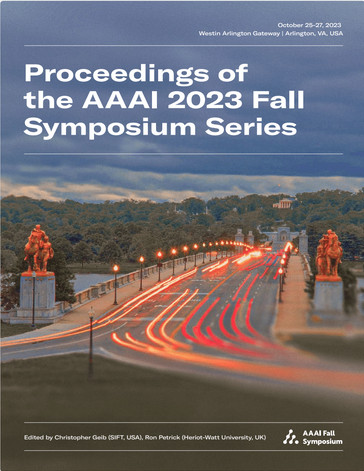Generative Environment-Representation Instance-Based Learning: A Cognitive Model
DOI:
https://doi.org/10.1609/aaaiss.v2i1.27696Keywords:
Generative Models, Instance-Based Learning, Cognitive ModelingAbstract
Instance-Based Learning Theory (IBLT) suggests that humans learn to engage in dynamic decision making tasks through the accumulation of experiences, represented by the decision task features, the actions performed, and the utility of decision outcomes. This theory has been applied to the design of Instance-Based Learning (IBL) models of human behavior in a variety of contexts. One key feature of all IBL model applications is the method of accumulating instance-based memory and performing recognition-based retrieval. In simple tasks with few features, this knowledge representation and retrieval could hypothetically be done using all relevant information. However, these methods do not scale well to complex tasks when exhaustive enumeration of features is unfeasible. This requires cognitive modelers to design task-specific representations of state features, as well as similarity metrics, which can be time consuming and fail to generalize to related tasks. To address this issue, we leverage recent advancements in Artificial Neural Networks, specifically generative models (GMs), to learn representations of complex dynamic decision making tasks without relying on domain knowledge. We evaluate a range of GMs in their usefulness in forming representations that can be used by IBL models to predict human behavior in a complex decision making task. This work connects generative and cognitive models by using GMs to form representations and determine similarity.Downloads
Published
2024-01-22
Issue
Section
Integration of Cognitive Architectures and Generative Models

